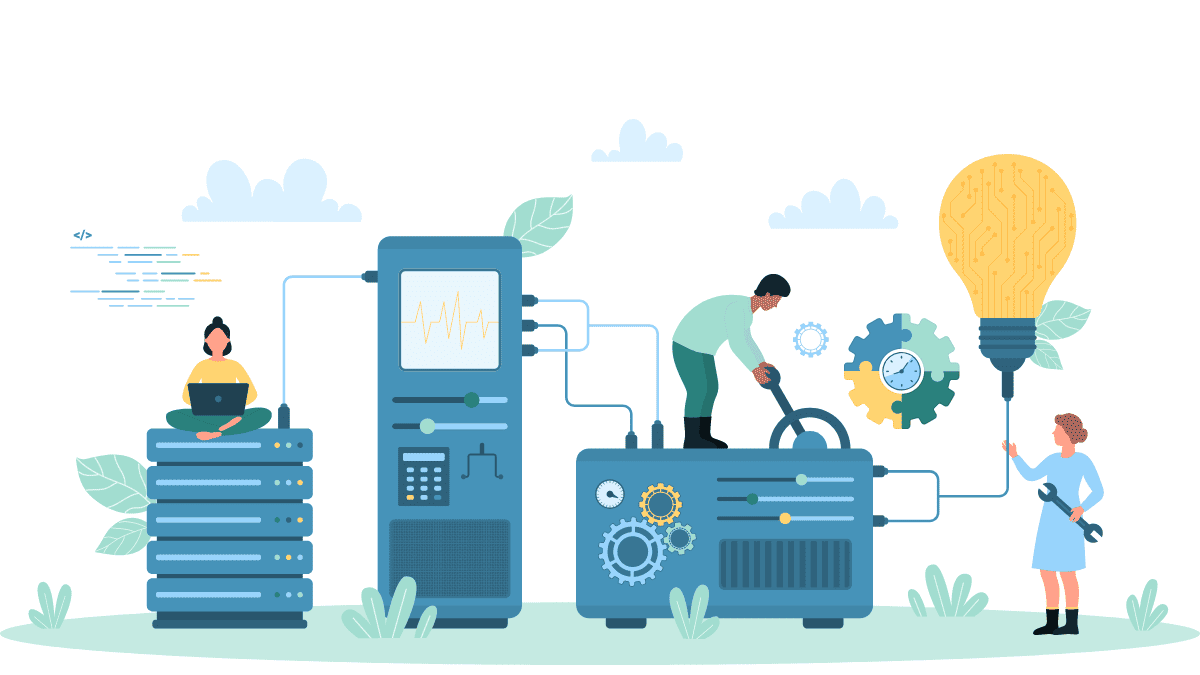In our journey from Idea to Scale, product development is the central pillar around which everything revolves. It’s where an idea transitions to a tangible solution. Product development isn’t just about creating something new; it’s about meeting genuine needs and delivering unparalleled value. Let’s breakdown this pivotal stage:
- Brainstorming
- You already have an MVP in place and based on the feedback and insights you have received from your select audience, you now have an idea of what works with your target audience and what does not.
- Through the insights you have received, you also have thought of a few more features that would resonate with your audience and improve the experience.
- Brainstorm these ideas with your team or friends and seek as many different perspectives as you can.
- Concepts & Visualization
- Sketching & Wireframing: Sketching screens of your product and wireframing the user experience and journeys help understand the product flow. It also helps identify loops or any bottlenecks in the product and fine-tune them. Visual representation as a whole also helps in ideating better.
- Feature Prioritization: Use prioritization frameworks like Value vs Effort, RICE or story mapping to prioritize your product features. Do not make the mistake of building everything at once. Product development is an iterative process.
- Feasibility Study: Consult with technical experts internally or externally to understand the viability of your envisioned product and the resources needed to achieve it.
- Design Experience
- UI/UX Principles: A product isn’t just about features and functionality; the user experience is equally if not more important. Ensuring intuitive navigation and visually appealing interfaces goes a long way in engaging and retaining users.
- Feedback Loops: Even at this stage, gather feedback on design prototypes. Tools like Figma and InVision help streamline this process and make feedback loops easy and intuitive.
- Technology Development
- Agile Methodology: Adopting agile practices, not necessarily the textbook model, allows for adaptability and quicker iterations based on feedback.
- Continuous Integration and Deployment (CI/CD): Ensure the product is continuously tested and ready for deployment. This accelerates the release cycle.
- Nightly releases: Nightly or Weekly releases enable quicker and closer feedback loops and quicker iterations resulting in better products.
- Testing
- Alpha Testing: This internal testing phase aims to identify glaring bugs and issues before external users access the product.
- Beta Testing: Creating and sharing the product builds with a select group of external users tests the product in real-world conditions. Their feedback, as in the case of an MVP cohort, reflects the target market and proves invaluable in building a successful product.
- Iterate: Use feedback from all stages to refine and perfect your product.
- Launch and Beyond
- Go-to-Market Strategy: How will you introduce your product to the world? Think of marketing, promotions, partnerships, and launch events.
- Continuous Improvement: Post-launch, the journey isn’t over. Monitor metrics, gather user feedback, and use these insights to better your product.
- Scale: As your user base grows, ensure your product scales efficiently to meet increased demand.
Product development is a roller coaster of challenges and triumphs. By focusing on the user’s needs, staying adaptable, and fostering a culture of continuous feedback, you build ideas into solutions that resonate with people.
As we go forward in this series, we’ll delve into the nuances of marketing and scaling your product.
This is post #5 in the series Idea to Scale, to view other posts click here.

